Caves
Almost all the caves in Elsmere Canyon are in the Pico Formation on the south side of the canyon. This is because the Pico Formation weathers at different rates - called differential weathering. Differential weathering happens as a result of variations in the composition and resistance of rocks. Softer rocks weather at a greater rate. Some beds are made up of hard sandstones containing pockets of soft shale. The shale weathers out first creating caverns which can eventually form caves or arches.
It has been suggested that the Tataviam may have used some of the caves, but I saw no evidence (not that I'm any sort of expert). If they did use the caves, the evidence has probably long weathered away. I did see grafitti carved into the sides of some caves, but that was from recent activity.
Here are most of the main caves high up on the south side of Elsmere Canyon. Depending on the angle of the sun, the caves often look deeper then they really are.

This large cavern is 6-ft deep, 20-ft wide and 12-ft high. It certainly would be some protection from the weather. (Photo taken on 7/21/2007)
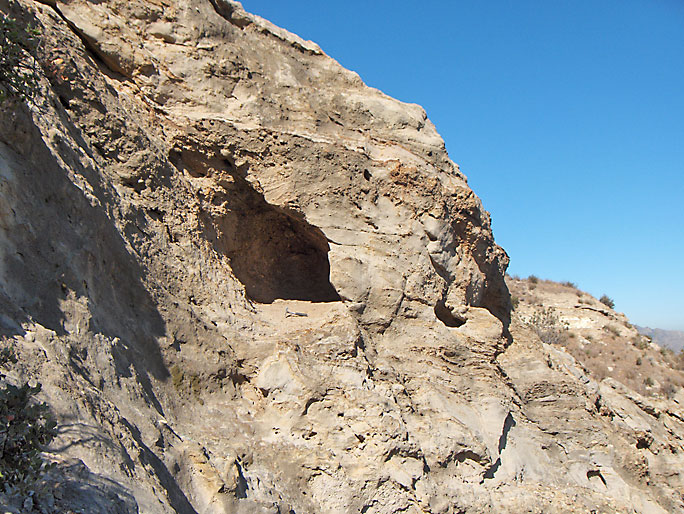
This cave is 6-ft wide at the mouth and is 7-ft deep. As with all the caves, the width narrows quickly as you go deeper into the cave. You can just see my hammer at the mouth. (7/21/2007)

Two caves are hidden behind the tree here. (7/21/2007)
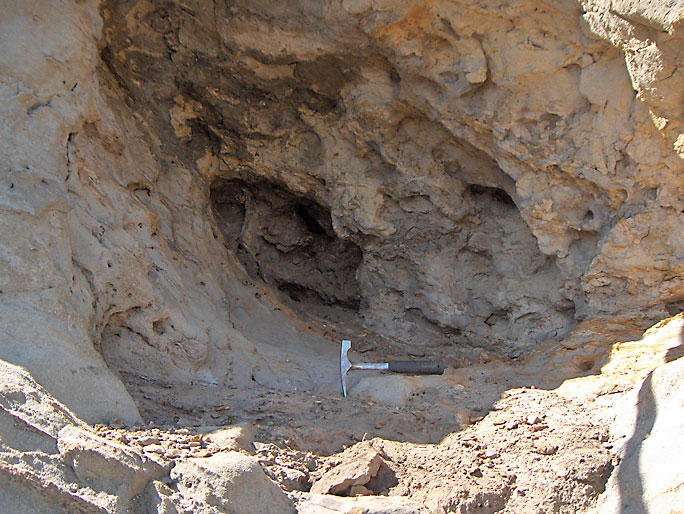
The cave on the left is 5-ft high at the mouth and 7-ft deep. (7/21/2007)

The cave on the right is only 3-ft high at the mouth but is 8-ft deep. There is an old nest at the back of the cave. (7/21/2007)

Here is the nest at the back of the previous cave. (7/21/2007)

In this outcrop are two small arches on the left and a cave on the right. You can't see the the arches in this view. (7/21/2007)
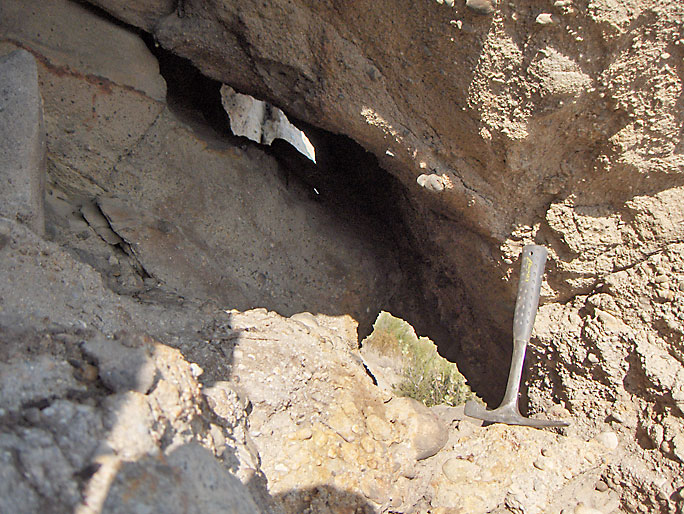
These are both of the arches. My hammer shows that both arches are small. (6/16/2007)
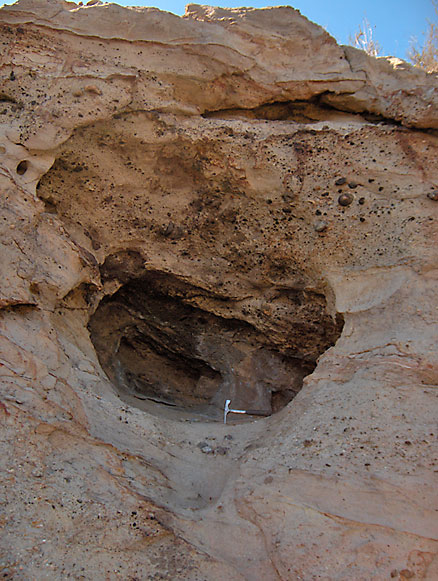
Just to the right of the previous photo is this cave. It is about 6.5-ft deep and 6.5-ft wide at the mouth. As with the other caves, it narrows quickly as you go deeper into the cave. (7/21/2007)
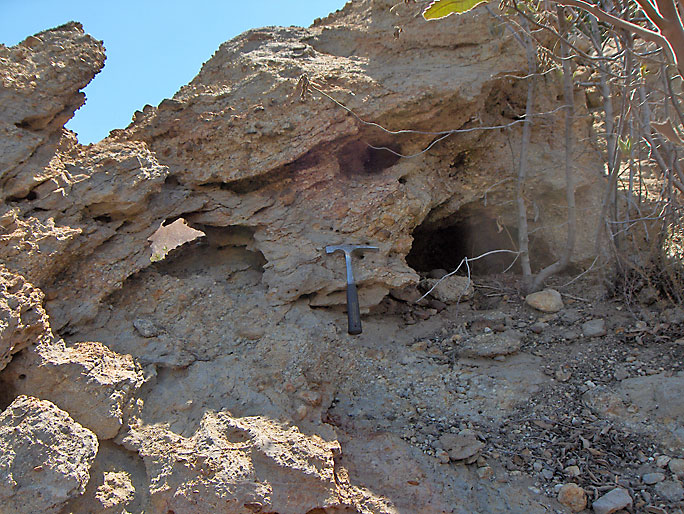
Small arch and cave. (7/21/2007)
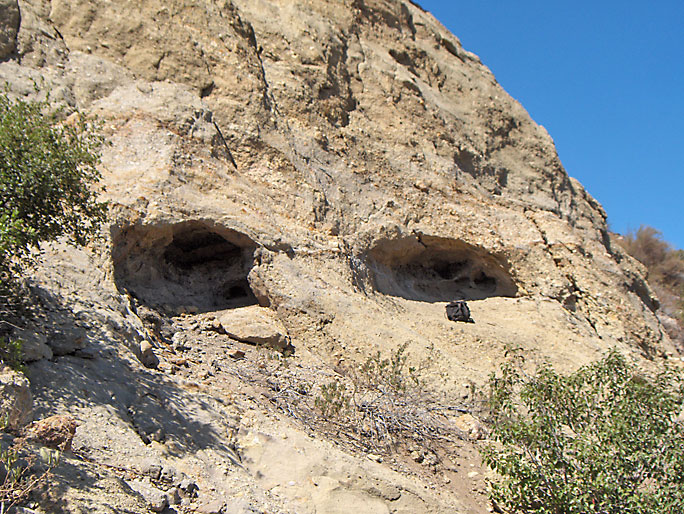
Here are two shallow caves. The somewhat larger left cave is 4.5-ft high at the mouth and about 6-ft deep. The left cave has two small side caves perfect for small animals. Some oil is seeping out in the caves. (7/21/2007)
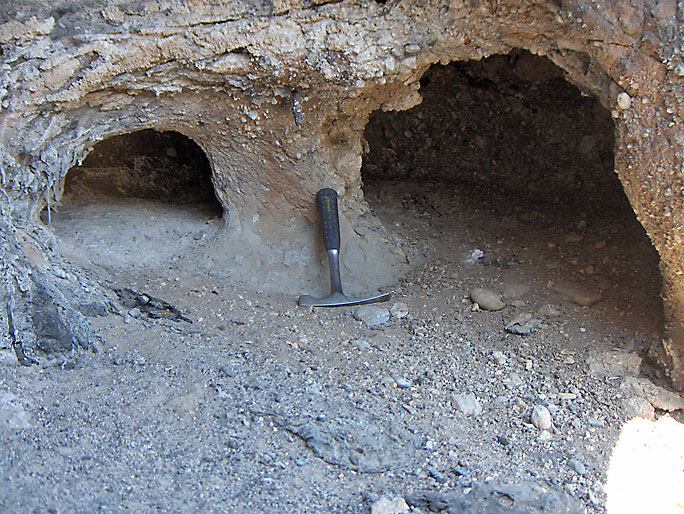
These are the two small side caves in the above left cave. (7/21/2007)
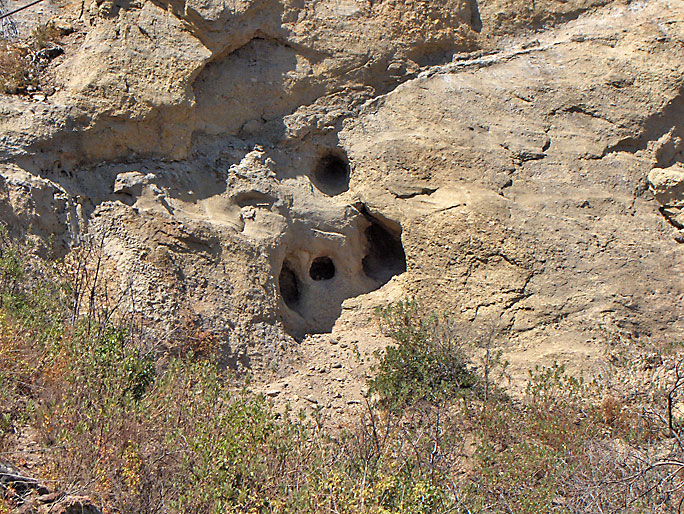
These small caves are perfect for bird nests. There was too much poison oak to get much closer. (7/21/2007)

This cave was created on the south face of the canyon when a large section of rock broke off leaving this gap. (9/16/2007)
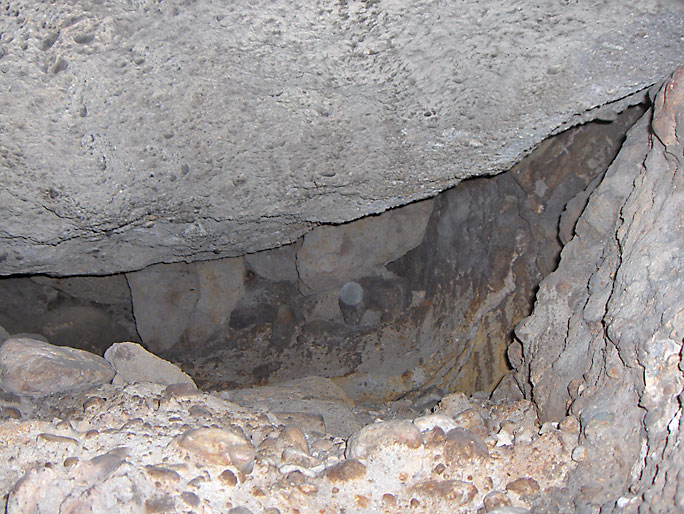
Looking inside, there are two chambers that appear to have been used by small animals. This is the larger right chamber. I do not know what the circular object is in the middle of the picture and I couldn't crawl deeper into the cave to get a closer look. (9/16/2007)
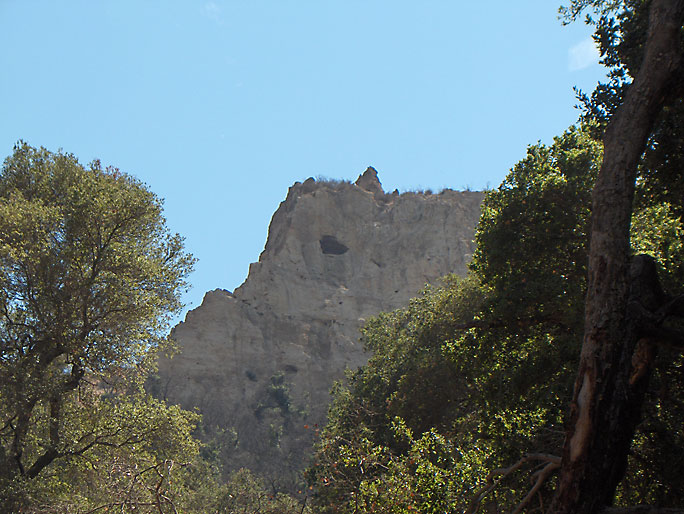
This cave is high up on the south face of the canyon. The picture was taken from the bottom of the canyon. (7/14/2007)

Closer view of cave. (9/15/2007)
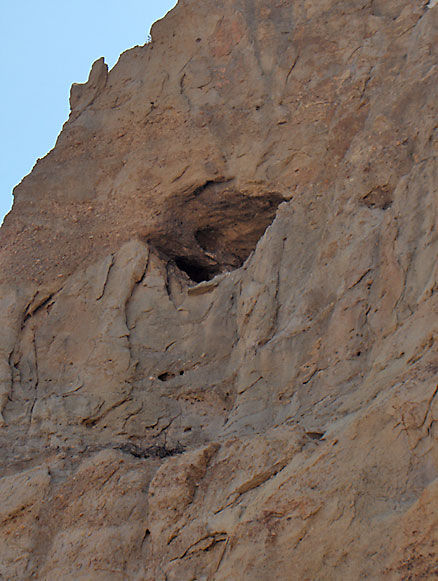
This is about as close as I could get to this cave. I reached the bottom of the cliff directly below it. It is about 50-ft up the cliff face and can only be reached with climbing equipment from above. The cave only contains bird nests. (9/16/2007)

There is a squarish arch in the middle of the picture with the cave from the previous pictures in the distant to the left. You can see how uneven the surface is here due the way the rock weathers. View is toward the east. (9/17/2007)
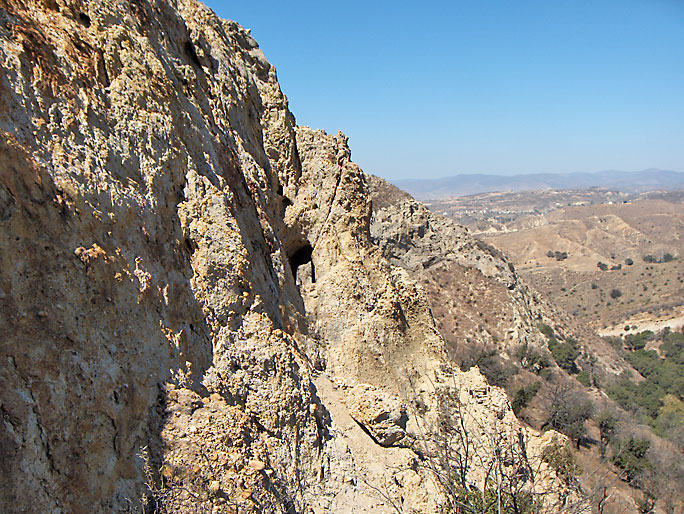
This is the squarish arch a little closer with a view to the west. (9/16/2007)

Still closer. The arch is looking larger. (9/16/2007)

At the "arch". It is much larger then it seems. This is more like a tunnel than an arch. You can walk right through it. (9/16/2007)

I walked through it and took this picture (glove for scale). It is about 10-ft long with a height varying from 6-15-ft. (9/16/2007)
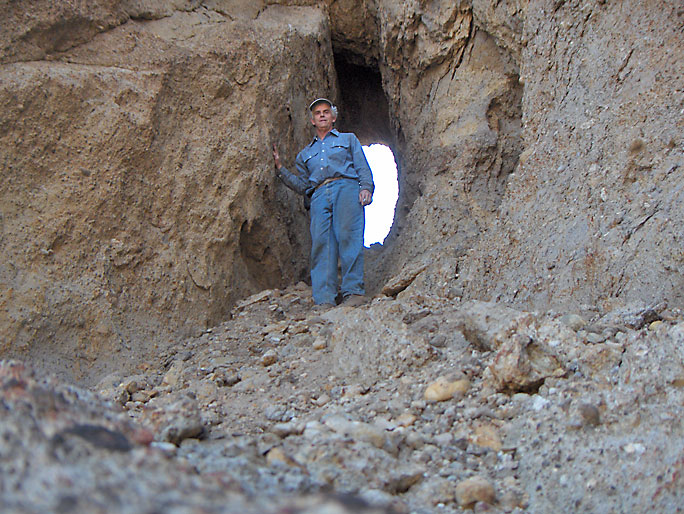
Here I am for better scale. (9/16/2007)

Here is another picture a little further away looking to the east. Note the fracture in the rock coming down from the top. Somehow this created a zone of weakness that weathering was able to take advantage of creating the tunnel. (9/16/2007)

Here is a cave in the making on the south face. Weathering is slowly removing material creating this concave indentation in the rock. (9/16/2007)

This small arch (notice glove for size) is found high up on the northeast facing south wall of the canyon. (2/10/2007)
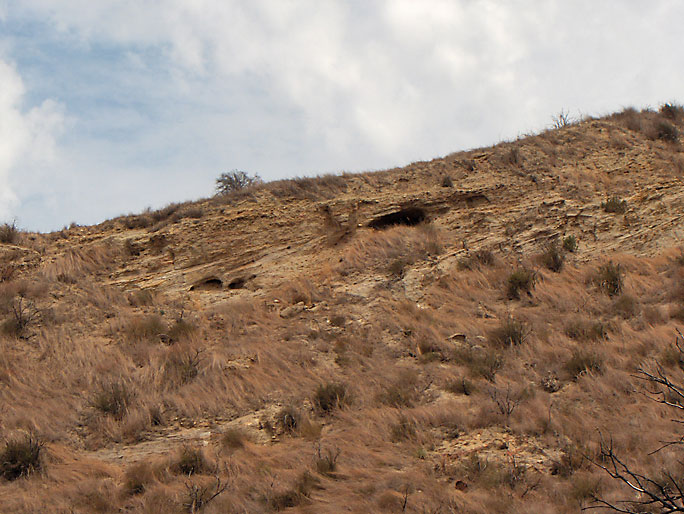
These caves are in the Pico Formation on the north side of the canyon. (9/1/2007)

Closer view of above larger cave. It is about 4.5-ft high, 12-ft wide, and 10-ft deep. It would make a good den for small animals. (9/15/2007)

Internal view of the cave showing that animals have used it. (9/15/2007)

This unusual small cave appears to have stalactites and stalagmites. (9/15/2007)

Group of small caves. They typically have evidence of nests for birds or small animals. (9/15/2007)
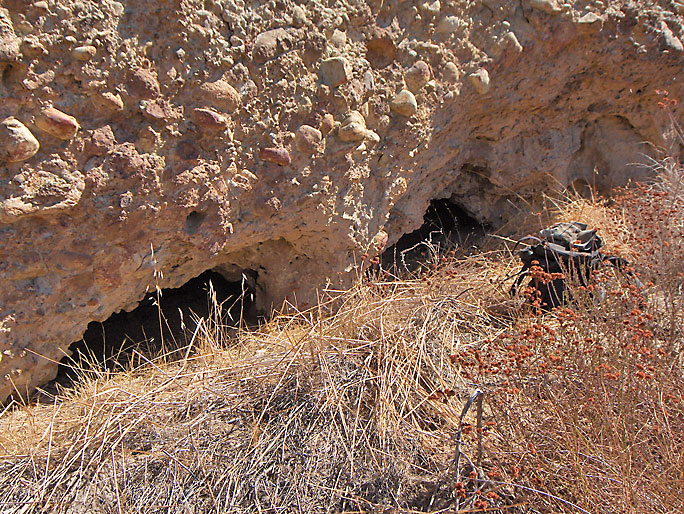
More small small caves on the north side. (9/15/2007)
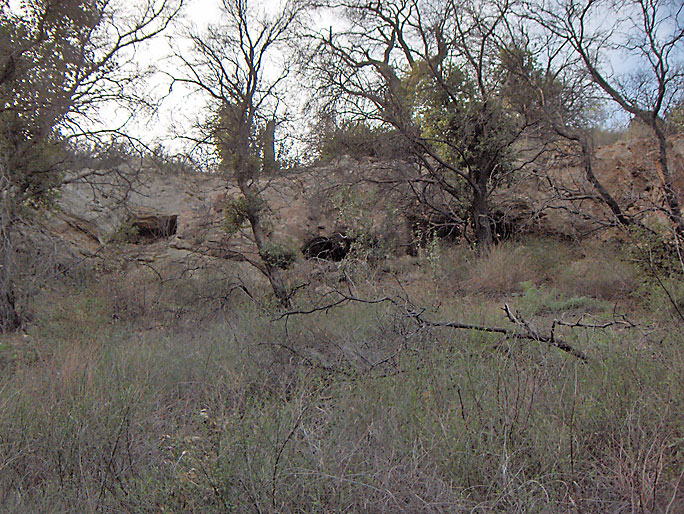
Group of small caves above the Elsmere ridge trail. These are probably the highest caves in the canyon. (1/1/2008)

Closer view of one of the above caves. They are all located just below a very hard conglomerate layer. The bed that the caves are in is softer and so has move weathering. (1/1/2008)
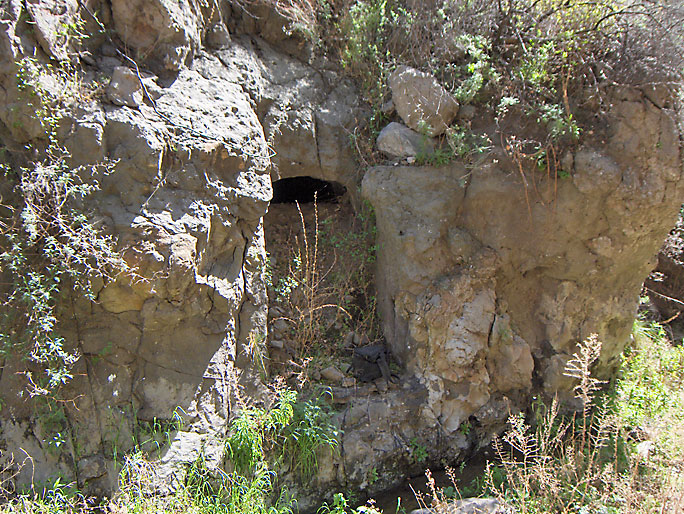
Man-made cave deep in the northeast tributary of the canyon. It is about 20 feet deep and 3 feet above the creek bottom. (3/10/2007)
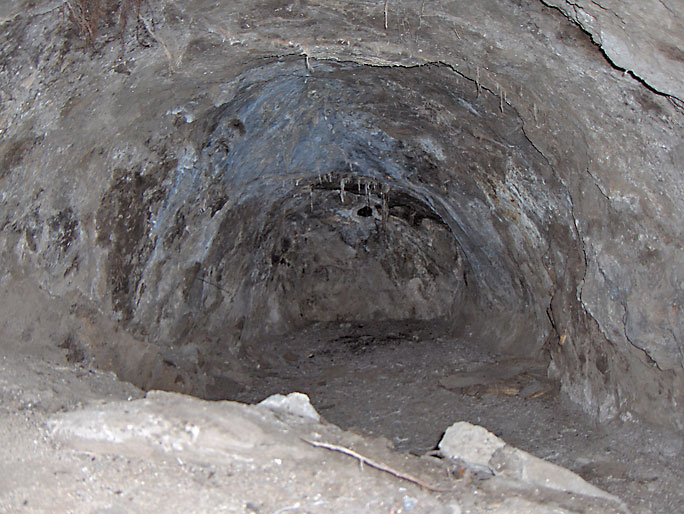
Inside view of man-made cave showing arched top. The cave was probably dug in the early 1900's to collect oil seeping out from the top. It looks like they gave up because the cave would have normally been a lot deeper. (9/12/2007)





































